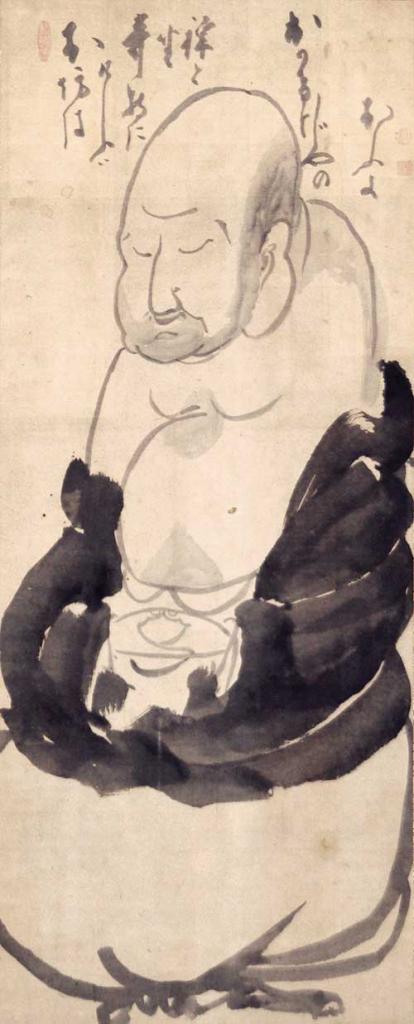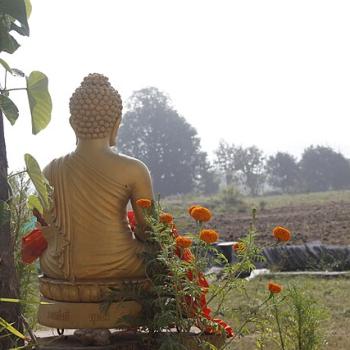There’s a bit of a hubbub in Western Zen communities about who is, or, maybe who should be a teacher.
There are a lot of people sporting the title these days. Some, how shall we say, of uncertain origins. Me, I find it totally surprising that there are a lot of people who want to be Zen teachers. Must be the big bucks. Or, a good way to meet people. Whatever the reason there are a lot of people who’ve hung their shingle offering to teach the general public. To those who’ve been around a while it has become obvious their quality is not exactly consistent.
Me, I’ve written on the problem from time to time. One such reflection was on the Soto Zen Buddhist Association website for a number of years.
The arguments about qualifications to teach range quite a bit. Or, at least appear to on the inter webs. One view is that there is a single standard, and that’s dharma transmission. That’s the one we’re most likely to run into on Facebook. Others think there are necessary forms of preparation for the term “teacher” to have any real meaning. You can put me in that second group. Along with the people who run most of the actual Zen centers in North America, the places where you can actually go and sit and study Zen.
Over the past few decades I’ve been honored to be invited into conversations with a number of Zen teachers who have been trying to find common agreement for recognizing who is genuinely qualified to teach Zen. Some have dismissed these teachers, including me, and our gatherings as the “establishment” trying to tell people what to do. This seems to be done playing into our contemporary disdain for expertise and with the naked intent of minimizing the importance of those who have actually undergone extensive training in describing what it takes. And, I will add, who expect there to be rigor in what they offer.
In fact nearly all these teachers who have been doing the work agree that the ritual acknowledgement called dharma transmission is a powerful and nearly always required symbol separating someone who is or is not within the family of Zen teachers. And, they all agree that the ritual alone means nothing.
As the primary practice of Zen is meditation the consensus among the gathered Zen teachers is that in order to teach Zen one must have extensive experience of Zen meditation. One might think this is obvious. But, it isn’t necessarily so. Certainly not if you rely heavily on social media where anyone with a modem can set up shop and express their views whether informed or not.
So, let me be clear. To teach something, you need to know it. And if it is important, it takes a lot of work to know it. And a lot of time to master it. That said of course its reasonable to ask how much time meditating is enough to become a meditation teacher? Specifically, how much actual Zen meditation is required before one might be competent to guide others on the way of Zen meditation? Or, more clearly, how long until someone might be expected to be able to guide others, independently?
Sadly, there can’t be any hard and fast rule. Some catch on quicker than others. Some never master the subject. However there are rules of thumb. Guidelines that make a lot of sense. And in developing these one gathering of teachers, the American Zen Teachers Association has proven to be very helpful. They are a support group of people who teach Zen. They include Vinaya ordained monks and nuns, priests in the Japanese model, and lay teachers. They’ve trained in styles that are wildly different.
But, in trying to be that support group they’ve also found they needed to try and capture a sense of who is in the group that needs supporting and who are not. And they found it, at least a pretty good rule of thumb. And that is that generally people who claim the title of “Zen teacher” should have sat with supervision something in the neighborhood of three hundred days. Minimum. These “days” are supervised by competent teachers and generally run eight to ten hours, and centrally feature Zen style meditation.
One may be a wise and good person without doing this. Of course. Not the point. The point is who can guide others on the ways of Zen meditation.
And, it looks like one needs at least this much time to begin to marinate in the practice, to genuinely experience the byways and nuances of the discipline, and critically be prepared to help others who are trying to find their way. And this is important, as well. This minimum time sitting isn’t sufficient, either. There are other things that need to be done. There is study. There are other supportive forms to the practice. There is maturation as a human being. This is where the teacher of the teacher is important, offering counsel and guidance as the student grows in depth and skill.
All this said, as a necessary if not sufficient condition, when wondering what is a minimum preparation for a Zen meditation teacher, and again I really am actually only taking about minimums, we can hold up three hundred days as an interesting standard.
There are teachers at the fringe, a word we might hold up in contrast to establishment, who claim their authority through the rites of dharma transmission with little actually meditation experience, who try to belittle this expectation through such terms as “butt time” or “ass time.” They’re throwing dust in our eyes. Its hard to reconcile the realities of this practice, the convolutions of heart and mind one encounters on this way, and not expect those who are guides to have extensive experience of their own. So, if you meet someone really riled up and wanting to denounce those who expect substantial preparation, well, you can make up your own mind as to what their issue really might be…
A word to the wise.
That, and, oh yes, caveat emptor…













